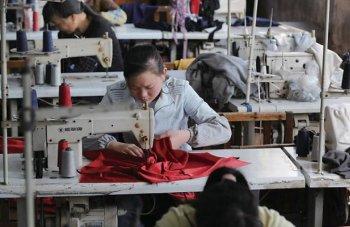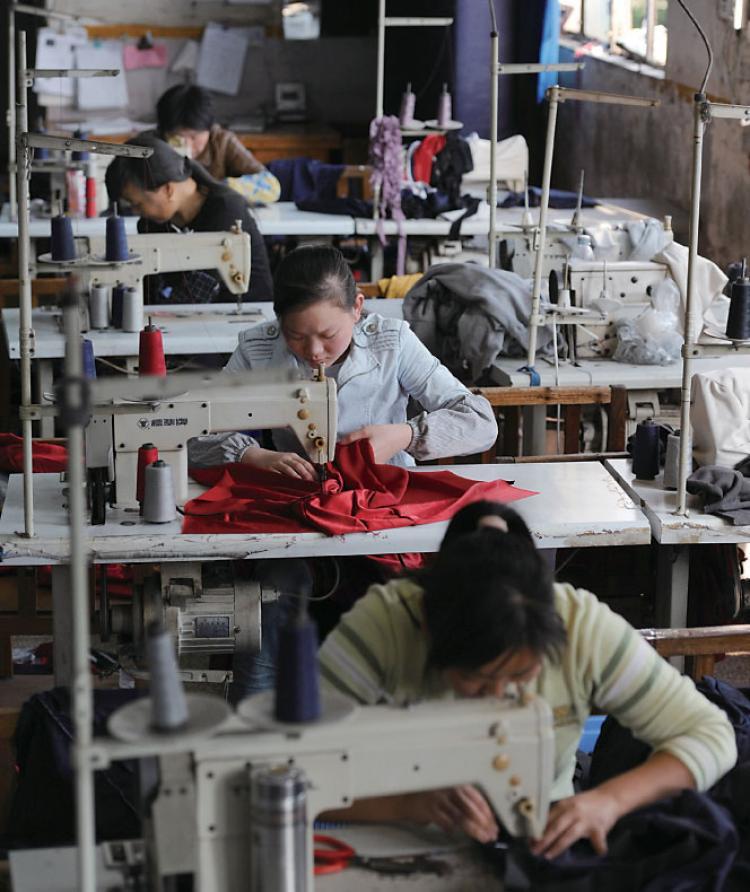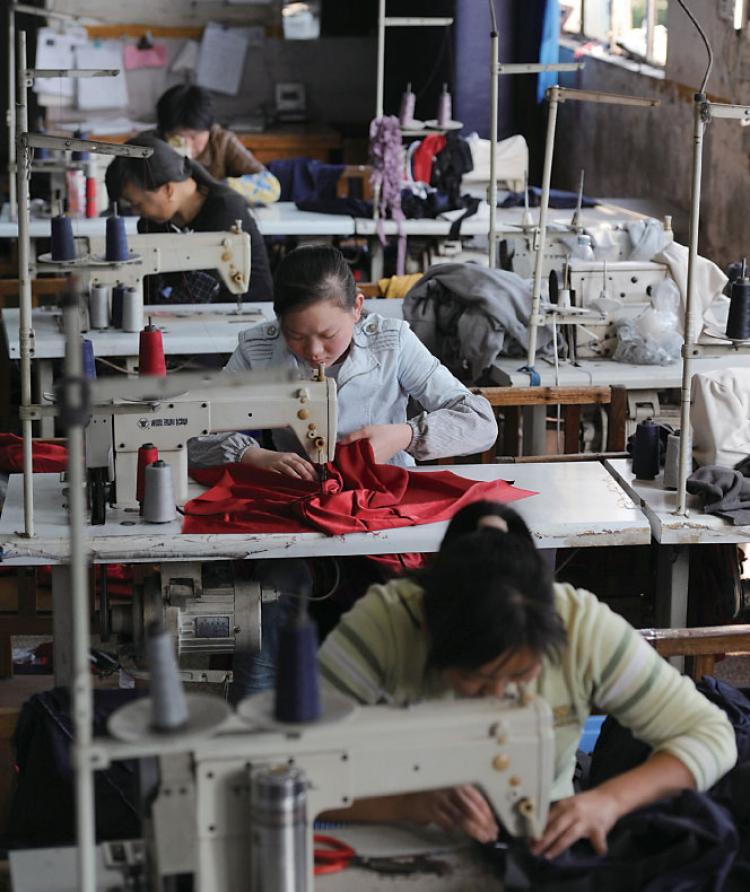Labor strikes in several coastal areas of China have led to wage increases in the mainland. But as labor costs continue to grow, China is losing its status as the low-cost factory of the world. More and more foreign companies are opting to leave China and are setting up factories in Mexico, Indonesia, or Vietnam.
Labor costs in Mexico rose sharply over 10 years ago, and were 240 percent higher than in China by 2002. As a result, many U.S. companies chose to operate their factories in China instead of neighboring Mexico. Now however, more U.S. companies are moving their factories from China to Mexico, according to a Jan. 28 report by Voice of America (VOA).
Meco Corporation, a Tennessee-based company manufacturing outdoor folding chairs and barbecue grills, has operated in China for over 10 years. Recently, due to an increase of labor strikes, primarily at foreign-owned companies, factory worker’s wages have more than doubled since 2007. Consequently, Meco decided to invest US$10 million into factories in northern Mexico.
Harrell Ward, President of Meco Corporation, told VOA that increases in salaries, shipping, and inventory costs in China, and the lower dollar to yuan exchange rate, has forced his company to move its manufacturing operations to Mexico.
Jabil Circuit, another U.S. company, has transferred its manufacturing business from China to Guadalajara, Mexico last year. They hired 7,000 Mexican workers to manufacture electronics such as BlackBerry smart phones for the Canadian company Research In Motion. Mexican factory manager Cesar Castro told VOA that by the middle of this year, Mexican labor costs would be the same as China’s, enhancing Mexico’s competitiveness.
Statistics show that Mexico’s average wage is only 14 percent higher than China’s, which seems to support Castro’s statement, according to the VOA report.
Oddly, Chinese manufacturing companies are also outsourcing to Mexico. Castro cited Lenovo, the largest PC-vendor in China, as an example. According to Castro, companies look at transportation costs, labor costs, and trade agreements between nations as deciding factors for manufacturing locations.
Statistics show that Mexico’s share in the U.S. import market rose from 10 percent in 2005 to a record high of 12 percent in 2010. This was the first time since China joined the World Trade Organization in 2001 that Mexico’s growth rate in the U.S. import market has surpassed China’s.
Qualified labor shortage in China is posing a serious problem for Taiwanese-owned businesses there. The annual migration of factory workers during the Chinese New Year, low wages, as well as large-scale factory relocations are among the reasons cited for the shortage.
Last year, the Management Institute of Taipei (Taiwan) conducted onsite surveys in southern and northern China of over 200 Taiwanese business leaders and managers. They found that Taiwanese owned businesses in those regions had an average labor shortage rate of 20 percent, and 76 percent of Taiwanese businesses felt pressure from the shortage. They increased workers’ wages by 20 percent on average in 2010, The New Epoch Weekly (NEW) reported on Jan. 28.
In November 2010, labor shortages in many Chinese provinces and cities came earlier than in previous years. The human resource director of a large electronics factory in Dongguan City told NEW that not all of his employees would come back to work following the Chinese New Year holiday, and this year the labor situation would be even more uncertain than in previous years.
In Shenzhen, many workers quit their jobs in early January 2011 to return to their hometowns, partly to avoid the annual New Year traffic congestion. Many also said they opted to spend more time with their families, which they don’t see all year, as their incomes are not large enough to entice them to stay the extra couple of weeks at their jobs.
Many manufacturers have thus lost as much as a third of their general work force. According to statistics published by Shenzhen City, labor shortages during the New Year holiday and the Chinese Spring Festival will reach about one million.
The Labor shortage not only affects the southeast coast of China, but also extends inland as more companies are moving away from the coast.
Last year, Foxconn Electronics moved its factories to Chongqing and Zhengzhou City. This year it plans on moving to Guangxi Province. Tens of thousands of workers are affected by these moves. At the same time, competition for workers puts pressure on existing businesses in these regions.
Guangxi Province has always been an exporter of migrant workers, but according to Chinese media reports, companies that moved there recently, like Taiwan’s Max Group, are still plagued by a shortage of workers.
Chia-Yan Yang, director of Research at the Taiwan Institute of Economic Research, told NEW: “Many Taiwanese business people said that export-oriented processing companies that do not focus on China’s domestic market will not consider moving to China’s inland areas; many labor intensive industries will move to Indonesia and Vietnam [instead].”
In Jiangxi Province, which also used to be an exporter of migrant workers, 170 out of 289 factories reported worker shortages last year. The shortage is estimated to be around 35,000 workers.
To entice workers to return after the Chinese New Year, Shanxi Province, Chongqing City, and Beijing announced they would increase the minimum wage on Jan 1. Jiangsu Province is planning to follow suit in February.
Xinyong Xiao, a Taiwanese financial and legal business consultant for Straits Exchange Foundation, believes that raising the minimum wage at the beginning of the year indicates that worker shortages are expected to be more severe after the holiday this year.
Xiao Yu, a citizen journalist, commented that Chinese society is now exhibiting a strange phenomenon: On one hand there is a labor shortage, but on the other there is high unemployment. Young people born in the 80’s and 90’s have a high wage demand and would rather stay unemployed than take jobs that don’t meet their working condition and salary expectations.
Analyst Cai Fang of the Institute of Population and Labor Economics at the Chinese Academy of Social Sciences said he believes the root cause of the labor shortage is related to the Chinese regime’s one child policy. He said as China entered the era of low fertility, the growth rate of the rural working-age population has slowed, gradually leading to labor demand growing faster than labor supply.
[email protected]
Labor costs in Mexico rose sharply over 10 years ago, and were 240 percent higher than in China by 2002. As a result, many U.S. companies chose to operate their factories in China instead of neighboring Mexico. Now however, more U.S. companies are moving their factories from China to Mexico, according to a Jan. 28 report by Voice of America (VOA).
Meco Corporation, a Tennessee-based company manufacturing outdoor folding chairs and barbecue grills, has operated in China for over 10 years. Recently, due to an increase of labor strikes, primarily at foreign-owned companies, factory worker’s wages have more than doubled since 2007. Consequently, Meco decided to invest US$10 million into factories in northern Mexico.
Harrell Ward, President of Meco Corporation, told VOA that increases in salaries, shipping, and inventory costs in China, and the lower dollar to yuan exchange rate, has forced his company to move its manufacturing operations to Mexico.
Jabil Circuit, another U.S. company, has transferred its manufacturing business from China to Guadalajara, Mexico last year. They hired 7,000 Mexican workers to manufacture electronics such as BlackBerry smart phones for the Canadian company Research In Motion. Mexican factory manager Cesar Castro told VOA that by the middle of this year, Mexican labor costs would be the same as China’s, enhancing Mexico’s competitiveness.
Statistics show that Mexico’s average wage is only 14 percent higher than China’s, which seems to support Castro’s statement, according to the VOA report.
Oddly, Chinese manufacturing companies are also outsourcing to Mexico. Castro cited Lenovo, the largest PC-vendor in China, as an example. According to Castro, companies look at transportation costs, labor costs, and trade agreements between nations as deciding factors for manufacturing locations.
Statistics show that Mexico’s share in the U.S. import market rose from 10 percent in 2005 to a record high of 12 percent in 2010. This was the first time since China joined the World Trade Organization in 2001 that Mexico’s growth rate in the U.S. import market has surpassed China’s.
China’s Labor Shortage Dilemma
Qualified labor shortage in China is posing a serious problem for Taiwanese-owned businesses there. The annual migration of factory workers during the Chinese New Year, low wages, as well as large-scale factory relocations are among the reasons cited for the shortage.
Last year, the Management Institute of Taipei (Taiwan) conducted onsite surveys in southern and northern China of over 200 Taiwanese business leaders and managers. They found that Taiwanese owned businesses in those regions had an average labor shortage rate of 20 percent, and 76 percent of Taiwanese businesses felt pressure from the shortage. They increased workers’ wages by 20 percent on average in 2010, The New Epoch Weekly (NEW) reported on Jan. 28.
In November 2010, labor shortages in many Chinese provinces and cities came earlier than in previous years. The human resource director of a large electronics factory in Dongguan City told NEW that not all of his employees would come back to work following the Chinese New Year holiday, and this year the labor situation would be even more uncertain than in previous years.
In Shenzhen, many workers quit their jobs in early January 2011 to return to their hometowns, partly to avoid the annual New Year traffic congestion. Many also said they opted to spend more time with their families, which they don’t see all year, as their incomes are not large enough to entice them to stay the extra couple of weeks at their jobs.
Many manufacturers have thus lost as much as a third of their general work force. According to statistics published by Shenzhen City, labor shortages during the New Year holiday and the Chinese Spring Festival will reach about one million.
The Labor shortage not only affects the southeast coast of China, but also extends inland as more companies are moving away from the coast.
Last year, Foxconn Electronics moved its factories to Chongqing and Zhengzhou City. This year it plans on moving to Guangxi Province. Tens of thousands of workers are affected by these moves. At the same time, competition for workers puts pressure on existing businesses in these regions.
Guangxi Province has always been an exporter of migrant workers, but according to Chinese media reports, companies that moved there recently, like Taiwan’s Max Group, are still plagued by a shortage of workers.
Chia-Yan Yang, director of Research at the Taiwan Institute of Economic Research, told NEW: “Many Taiwanese business people said that export-oriented processing companies that do not focus on China’s domestic market will not consider moving to China’s inland areas; many labor intensive industries will move to Indonesia and Vietnam [instead].”
In Jiangxi Province, which also used to be an exporter of migrant workers, 170 out of 289 factories reported worker shortages last year. The shortage is estimated to be around 35,000 workers.
To entice workers to return after the Chinese New Year, Shanxi Province, Chongqing City, and Beijing announced they would increase the minimum wage on Jan 1. Jiangsu Province is planning to follow suit in February.
Xinyong Xiao, a Taiwanese financial and legal business consultant for Straits Exchange Foundation, believes that raising the minimum wage at the beginning of the year indicates that worker shortages are expected to be more severe after the holiday this year.
Xiao Yu, a citizen journalist, commented that Chinese society is now exhibiting a strange phenomenon: On one hand there is a labor shortage, but on the other there is high unemployment. Young people born in the 80’s and 90’s have a high wage demand and would rather stay unemployed than take jobs that don’t meet their working condition and salary expectations.
Analyst Cai Fang of the Institute of Population and Labor Economics at the Chinese Academy of Social Sciences said he believes the root cause of the labor shortage is related to the Chinese regime’s one child policy. He said as China entered the era of low fertility, the growth rate of the rural working-age population has slowed, gradually leading to labor demand growing faster than labor supply.
[email protected]





